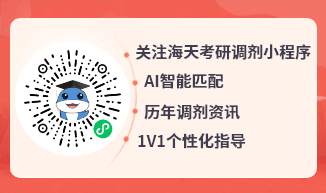考研英语阅读经典试题及答案14
暑假已经结束,考研的复习还未结束。同学们在新学期更要努力备考,掌握知识点和技巧。海天考研小编为同学们整理了考研英语经典的阅读练习题,希望对同学们的复习有帮助。
The use of heat pumps has been held back largely by skepticism about advertisers’ claims that heat pumps can provide as many as two units of thermal energy for each unit of electrical energy used, thus apparently contradicting the principle of energy conservation.
Heat pumps circulate a fluid refrigerant that cycles alternatively from its liquid phase to its vapor phase in a closed loop. The refrigerant, starting as a low-temperature, low-pressure vapor, enters a compressor driven by an electric motor. The refrigerant leaves the compressor as a hot, dense vapor and flows through a heat exchanger called the condenser, which transfers heat from the refrigerant to a body of air. Now the refrigerant, as a high-pressure, cooled liquid, confronts a flow restriction which causes the pressure to drop. As the pressure falls, the refrigerant expands and partially vaporizes, becoming chilled. It then passes through a second heat exchanger, the evaporator, which transfers heat from the air to the refrigerant, reducing the temperature of this second body of air. Of the two heat exchangers, one is located inside, and the other one outside the house, so each is in contact with a different body of air: room air and outside air, respectively.
The flow direction of refrigerant through a heat pump is controlled by valves. When the refrigerant flow is reversed, the heat exchangers switch function. This flow-reversal capability allows heat pumps either to heat or cool room air.
Now, if under certain conditions a heat pump puts out more thermal energy than it consumes in electrical energy, has the law of energy conservation been challenged? No, not even remotely: the additional input of thermal energy into the circulating refrigerant via the evaporator accounts for the difference in the energy equation.
Unfortunately there is one real problem. The heating capacity of a heat pump decreases as the outdoor temperature falls. The drop in capacity is caused by the lessening amount of refrigerant mass moved through the compressor at one time. The heating capacity is proportional to this mass flow rate: the less the mass of refrigerant being compressed, the less the thermal load it can transfer through the heat-pump cycle. The volume flow rate of refrigerant vapor through the single-speed rotary compressor used in heat pumps is approximately constant. But cold refrigerant vapor entering a compressor is at lower pressure than warmer vapor. Therefore, the mass of cold refrigerant — and thus the thermal energy it carries — is less than if the refrigerant vapor were warmer before compression.
Here, then, lies a genuine drawback of heat pumps: in extremely cold climates — where the most heat is needed — heat pumps are least able to supply enough heat.
1. The primary purpose of the text is to
[A] explain the differences in the working of a heat pump when the outdoor temperature changes.
[B] contrast the heating and the cooling modes of heat pumps.
[C] describe heat pumps, their use, and factors affecting their use.
[D] advocate the more widespread use of heat pumps.
2. The author resolves the question of whether heat pumps run counter to the principle of energy conservation by
[A] carefully qualifying the meaning of that principle.
[B] pointing out a factual effort in the statement that gives rise to this question.
[C] supplying additional relevant facts.
[D] denying the relevance of that principle to heat pumps.
3. It can be inferred from the text that, in the course of a heating season, the heating capacity of a heat pump is greatest when
[A] heating is least essential.
[B] electricity rates are lowest.
[C] its compressor runs the fastest.
[D] outdoor temperatures hold steady.
4. If the author’s assessment of the use of heat pumps (lines 1-4) is correct, which of the following best expresses the lesson that advertisers should learn from this case?
[A] Do not make exaggerated claims about the products you are trying to promote.
[B] Focus your advertising campaign on vague analogies and veiled implications instead of on facts.
[C] Do not use facts in your advertising that will strain the prospective client’s ability to believe.
[D] Do not assume in your advertising that the prospective clients know even the most elementary scientific principles.
5. The text suggests that heat pumps would be used more widely if
[A] they could also be used as air conditioners.
[B] they could be moved around to supply heat where it is most needed.
[C] their heat output could be thermostatically controlled.
[D] people appreciated the role of the evaporator in the energy equation.
[答案与考点解析]
1. 【答案】C
【考点解析】这是一道中心主旨题。本文的第二、三、四段描述了“heat pumps”的相关物理原理,第一、五、六段谈到了影响“heat pumps”应用的原因。由此可见本题的正确选项应该是C。考生在解题时一定要对全文的整体结构有所认识,并将各段的主题句联系起来加以理解。
2. 【答案】C
【考点解析】这是一道段落间关系题。通过题干中的“the question of whether heat pumps run counter to the principle of energy conservation”可迅速确定本题的答案信息来源应该在第二段,因为第一段就是本题的题干。通过仔细阅读原文可发现本题的答案信息来源在第二、三、四段,在这三段中本文作者为解决相关问题给出了“relevant facts”(相关事实)。可见本题的正确选项应该是C。考生在解题时一定要注意段落之间的相互关系。
3. 【答案】A
【考点解析】这是一道审题定位与反推题。通过本题题干中的“heating season”可迅速将本题的答案信息来源确定在尾段,因为尾段中的“extremely cold climates”暗示出“heating season”。通过仔细阅读和理解尾段并且进行相应的推导就可得出本题的正确选项A。考生在解题时首先要具备审题定位的能力,另外在解题时不能仅仅停留于字面含义,要多动脑子进行合理的推导。
4. 【答案】C
【考点解析】这是一道归纳推导题。题干把本题所涉及的问题确定在第一段,而本文作者对于该问题的解释和说明确在第四段。通过对这两段的综合归纳推导,可得出本题的正确选项是C。由于作者在第四段的深刻解释帮助解决了人们心中的疑惑,但是这两段的深层含义暗示我们:人们在做广告时要避免使用超出消费者可信度的信息。考生在解题时要注意段落之间的联系,更要注意作者所要传递的深层含义。
5. 【答案】D
【考点解析】这是一道审题定位与段落间关系题。通过题干中的“heat pumps would be used more widely”可迅速确定本题的题干来自于首段,在首段中我们也可以得知阻碍“heat pumps”被大家广泛接受的原因是“contradicting the principle of energy conservation”。在本文的第四段作者对第一段中所涉及的问题给出了合理的解释,指出“heat pumps”并没有“contradicting the principle of energy conservation”。问题出在人们对于“evaporator”缺乏了解。综合这两段的内容我们可得知:如果人们对“evaporator”有所认识,他们对“heat pumps”就不会心存疑虑,同时他们就会接受“heat pumps”,从而“heat pumps”就会得到广泛的利用。可见本题的正确选项应该中D。
2025考研人数达388w,考研热度依旧火热!如何备战2026考研?哪个考研专业适合自己?在职考生如何备考?考研知识点繁多,择校困难大,和海天考研咨询老师聊一聊。网课面授多项选,专业辅导1对1,全年集训随时学!

上一篇:考研英语阅读经典试题及答案13
下一篇:考研英语阅读经典试题及答案15






